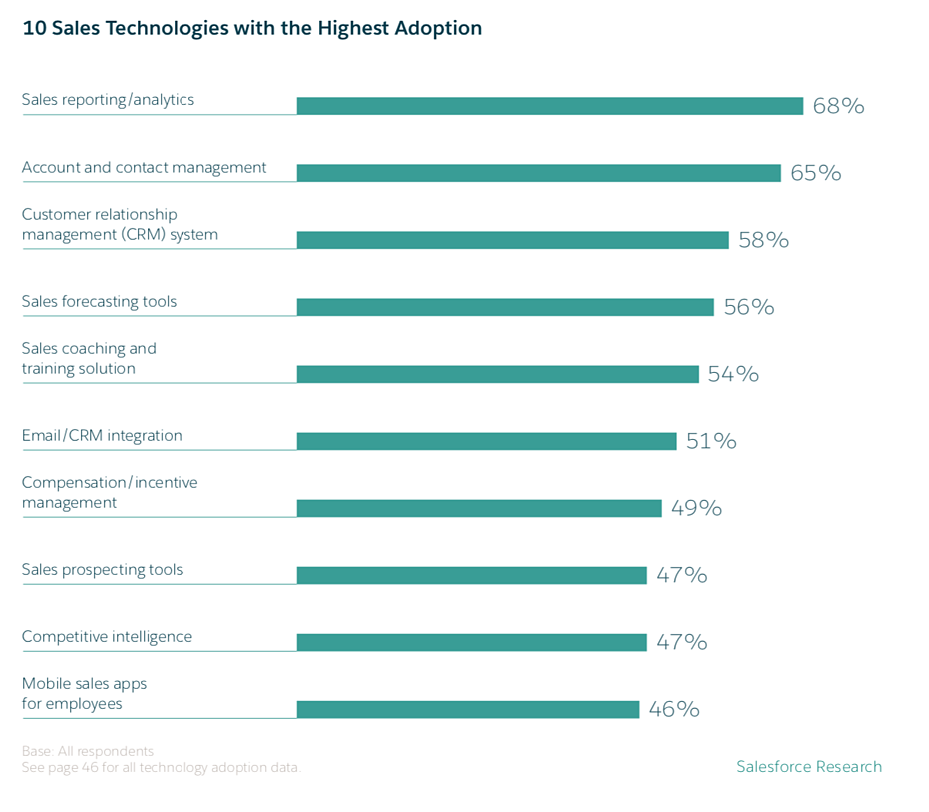CI and Adoption of Sales Enablement Tech

How does competitive intelligence feed into the most popular sales technologies?
Artificial Intelligence is predicted to be the most adopted sales technology over the next two years and promises to help sales professionals use data to understand their customers and be better prepared. A typical large organisation can spend around $3,143 per rep/annually on sales technologies, and so knowing how the technology stack impacts day to day sales performance is essential.
Competitive intelligence practitioners and sales teams alike know that intelligence gathering is never undertaken in isolation in an independent silo. Salesforce’s State of Sales report from 2018 goes into detail about sales tech with the highest adoption. We thought it would be useful to provide some context into how competitive intelligence feeds into technologies you might already be using. Let’s have a look:
1. Reporting and Analytics
Many companies are already tracking KPIs and metrics around their wins and losses versus different competitors. They typically track by geography, vertical, product/service, as well as by channel partner. This historical data can be very powerful in providing predictive analytics to account managers who are in deals. It helps them understand which competitors to expect and to take action by reaching out to colleagues or review win-loss reports that provide an edge when it comes to winning new deals.
2. Account and contact management and CRM systems
A no-brainer when it comes to account management; when CI data feeds into a CRM database it ensures that as account managers move between accounts, the history is not lost. Marketing can also target those accounts when and if there’s a competitive campaign against a list of competitors offering buy-backs or targeting new feature/benefits compelling a customer to change.
3. Sales Forecasting Tools
Virtual selling and automation were noted as key trends of sales in Salesforce’s report. Within these are forecasting tools with an adoption rate of 56%. Competitive Intelligence naturally informs a huge part of forecasting. Sales reps use CI to get a sense of where competitors are strong and weak in terms of their coverage by geography and go to market through different verticals and channels.
4. Sales Coaching and Training Solutions
As sales practices shift to become more mobile and virtual, coaching and training solutions need to become more automated and on-demand. CI platforms such as CompeteIQ automatically collects interactive content from account managers as they move deals through the pipeline to either a win or a loss. This content can then double as resources for training purposes.
As the nature of sales continues to evolve with tech, so too does the need to make sure technology stacks are up to date and relevant. Competitive intelligence feeds into every technology that companies have already adopted. If you want to make sure you are realising the full potential of CI in your company, we can help. Talk to one of our CI experts today to see a demo of the CompeteIQ platform.

